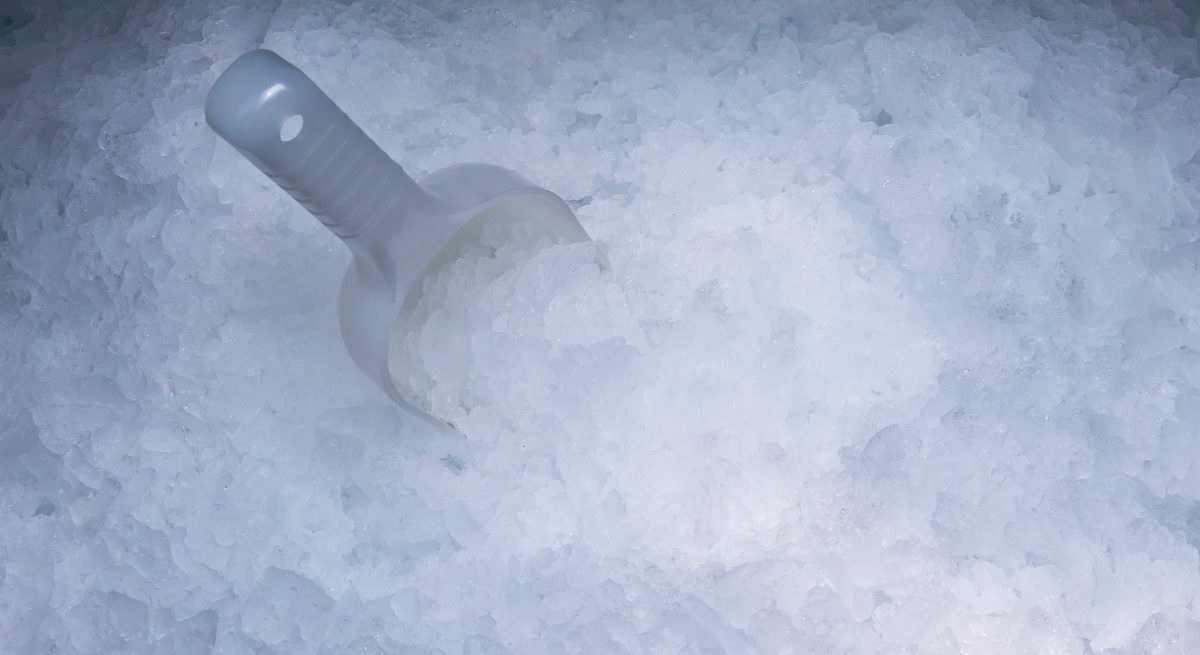Top Five Ways to Get Ice Machine Peak Performance for the Summer
4 Min Read By John Mahlmeister
For customers of restaurants, bars, and other eateries, ice is a minimum expectation, especially during the hot summer months. Owners and managers who've experienced a broken-down machine or reduced production all too keenly feel the urge to ensure their ice maker is operating at peak performance, especially in the season when they need it most. Luckily, there are a few steps that can be taken to ensure the ice maker is running optimally for the higher demands of summertime.
Step 1: Ice Management
Maximizing ice management is the easiest and one of the most effective ways to get maximum ice from an existing ice machine. At the end of the shift closers should fill every drink station and ice holding bin (behind the bar, above the fountain drinks, anywhere ice is normally stored). In the morning, openers should do the same thing, as stored ice will have depleted somewhat due to melting.
Sometimes the amount of ice a business has is limited not by how much the ice maker can produce but by the size of the ice storage bin. When the bin is full, it signals the ice maker to stop producing. Distributing as much of that ice as possible to other storage bins enables the ice maker to continue running.
Another pro tip is to keep shoveling the ice forward in the bin. It tends to pile up in the back of the ice bin and can prematurely activate the full bin control. Train employees to scoop from the back of the ice bin.
Step 2: Clean It Up!
A clean ice machine runs more efficiently. It seems obvious, right? Most appliances run better when they aren’t clogged or obstructed by grime. Daily and weekly wipe downs help with overall cleanliness but can disguise an ice maker that may have scale, slime, mold, or other build-up inside. Over time, these substances affect ice production (and can make for dirty ice – yuck!).
Deep cleans are an important part of preventive ice machine maintenance. Ice machine manufacturers recommend at least two deep cleans per year, but some environments necessitate more frequent cleanings. Environments with airborne contaminants such as yeast, flour, dust, or grease can make an ice machine dirty faster, so more frequent cleaning is needed.
An ice machine technician performs deep cleaning by taking apart the unit and cleaning important ice-making components such as the evaporator, condenser, and water filters. The technician will also clean the ice bin where mold and slime love to grow.
Step 3: Cool the Environment
Air conditioners also have their work cut out for them in the summer months. Oftentimes, they cannot keep up with the external heat and the heat output of a busy kitchen. If the air conditioner can’t cool the ice machine’s environment effectively, management should check to make sure the A/C is up to date on maintenance – fresh filter, vents clear, and seasonal service completed.
When the temperature begins to rise in the back of the house, the ice maker must work much harder to produce the same amount of ice. Prolonged temperatures of 90 degrees or higher are going to result in low or no ice production. There is not an ice maker on the market that can maintain its highest ice production rate in an overly hot environment.
Some restaurant owners set up an industrial fan pointed at the ice maker. This only combats higher kitchen temperatures if the fan is directing cooler air from another area into the heated room. Otherwise, a fan will simply circulate hot air.
Step 4: Relocate the Ice Maker
If summertime kitchen temperatures cannot be lowered, another option is to move the ice maker to a cooler area. Oftentimes, ice makers are sold and installed by companies that do not understand the environmental needs of the ice machine. They may be installed in closets or small, airtight spaces. They may be placed near other heat producing appliances or too close to the cooking surfaces in a kitchen. They are sometimes put in rooms or buildings that don’t have temperature control.
The placement of the ice maker is critical to ensure the environment around it is between 45- and 90-degrees Fahrenheit. The ice maker requires an open space around it of at least one foot. This means nothing should be leaning against it, like boxes, or blocking airflow to it, like a wall.
A quick fix is to make sure nothing is stacked on the ice maker, leaning on the ice maker, or pushed up against any side of the ice maker.
Step 5: Get a New Ice Maker
There’s a reason this option is at the end of the list. Once all the suggestions above are exhausted, it may be that the ice maker still can’t keep up with the business’s needs. Sometimes this is due to the age of the ice machine or a history of neglected maintenance. Other times, it’s because the business has grown, and ice needs exceed the ice maker (or bin) capacity. In either case, some business owners attempt to supplement ice production by buying bags of ice or scheduling ice deliveries. The cost of this band-aid solution will quickly outweigh the cost of buying or leasing a most suitable ice maker. Not to mention, it’s a considerable waste of time to coordinate this supplemental ice.
If an ice machine simply cannot keep up with ice demand, many business owners avoid the massive capital outlay of buying a new ice maker by leasing one instead. Traditional leases do not include maintenance, repairs, or back-up ice, so the all-inclusive Easy Ice subscription is the ideal option for business owners who want an ice maker with a guaranteed, hassle-free ice supply.
Be sure to explore steps one through four above for combatting ice issues in the summer before spending money on a new ice maker.


